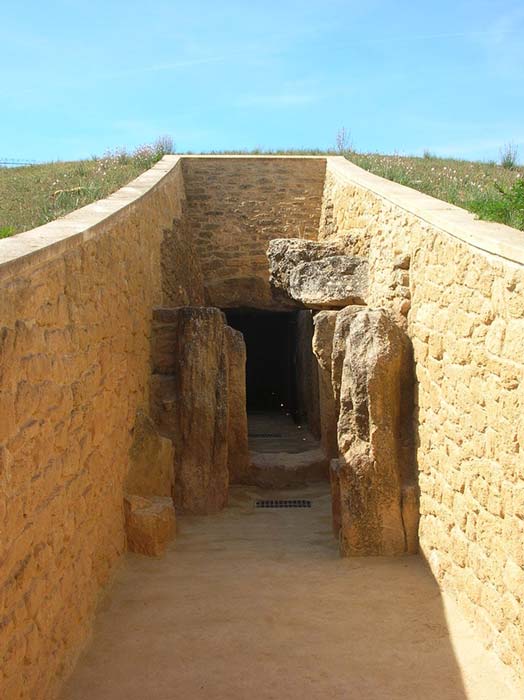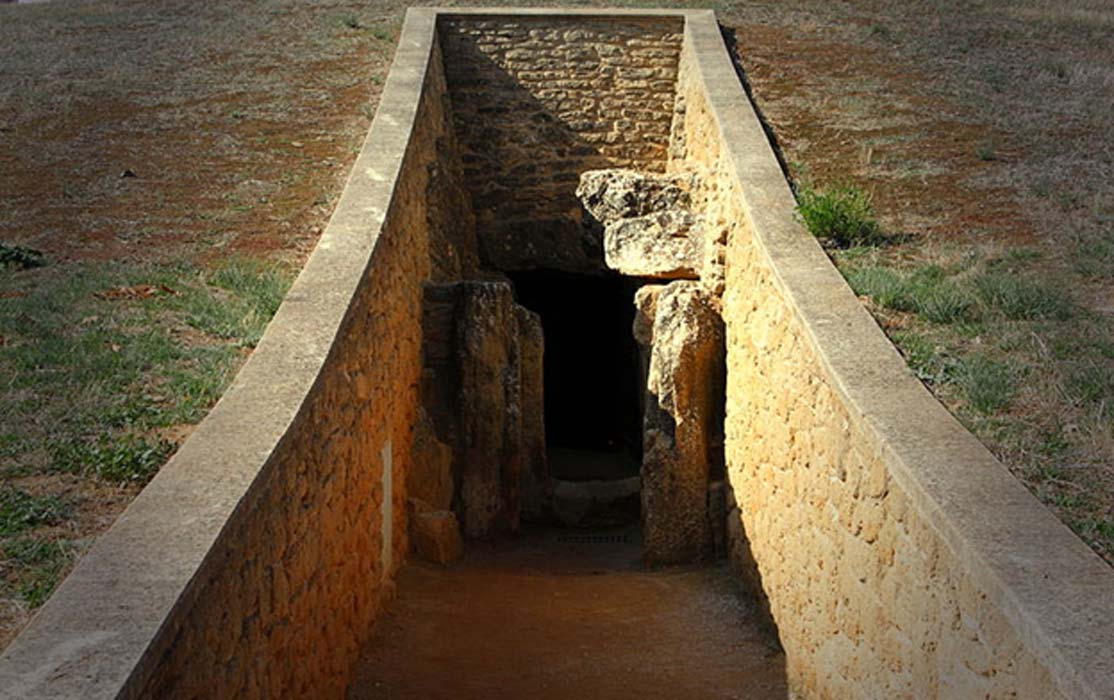Who Were the Ancient People that Built the Remarkable Megalithic Tombs of Malaga?
Thousands of years ago, a series of megalithic tombs were built in the breathtaking landscape of Malaga in Spain. The magnificence of the constructions attracts thousands of tourists every year. The stone-made tombs still hide many secrets, including the origins of what is now Antequera province. These prehistoric megalithic constructions allow modern people to step into a unique atmosphere of ancient mystery and intrigue dating back 5,000 years.
The dolmens were officially discovered and recorded between 1903 and 1905 by the brothers Antonio and José Viera from Antequera, a province of Malaga. The distance between the Dolmen of Viera and Dolmen of Menga is only 70 meters (230 ft). Although the two tombs were made during different millennia, the monuments reveal a clear continuation of religious and ritual thought since prehistoric times.
Like most of the tombs dated back to the same period in Iberia, both dolmens are oriented 96° south east. This location is inspired by the summer solstice, but the surprising precision of the technology they used still confounds experts. Moreover, the dolmens from Malaga reveal the heritage of people whose story can only be told by the constructions they left behind.
The Dolmen of Viera
The Dolmen of Viera is located under a mound, also called a tumulus. It is 50 meters (160 ft) in diameter. The corridor leading to the burial chamber is quite long, measuring 21 meters (69 ft.). However, the burial chamber is rather small – just 200 cm (79 inches) high and 180 cm (71 inches wide). The tiny size of the tomb may be disappointing to the people who search for incredibly huge and rich tombs, like those of ancient Egypt.
The only way to discover more information about the builders of the dolmens at this time is by studying the burial goods, abandoned artifacts, and the measurements of the megalith.

Inside the Dolmen of Viera. (CC BY 3.0)
An interesting characteristic noticed by researchers is related to the stones of the sides and the roof of the dolmen. The stones inside the construction had been prepared in a very careful and precise way. It is easy to notice that the workers spent more time on polishing them to make them fit well together.
- Rich Tomb of an Etruscan Princess Discovered in Italy
- The ancient Lycians and their spectacular rock-cut tombs
- The Tomb of Pharaoh Seti I: A Missing Mummy, An Unexpected Tunnel and a Mummified Bull
The Dolmen of Menga
The Dolmen of Menga is believed to be older, about 1,000 years. According to historic accounts, it was built as a grave for the families that ruled in this territory about 5,000 years ago.

Dolmen de Menga. (CC BY-SA 3.0)
The Builders of the Dolmens
Centuries ago, the dolmens were believed to have been built by supernatural spirits. However, excavations have revealed that they were very clearly human-made monuments. The construction is related to a cult of the sun.
According to the official document by Junta de Andalucia:
''The builders of the Antequera megaliths were the first farming communities that occupied the fertile lowlands (the so-called vega) of the Guadalhorce valley. Not far from the megalithic monuments, a series of settlements from the Neolithic and Copper Ages have been identified (the periods in which the megalithic phenomenon flourished, from about 5000 to 2200 BC). In El Torcal karstic formation (south of Antequera) and at the Sierra de Mollina (further to the Northwest), cave settlements of the Neolithic period - such as Cueva del Toro, Cueva de la Pulsera or Cueva de la Higuera - have been found, and archaeological research has been undertaken in some of them. The closest settlement to the megalithic necropolis, however, is Cerro de Marimacho, a small hill lying some 200 meters east to Menga and Viera. Here, in the late Copper Age (c. 2600-2200 BC), there was a small open-air village with semi-subterranean hut like dwellings. It is likely that the challenging enterprise of building the massive megalithic monuments required close cooperation between several communities that shared religious codes as well as a notion of common kin or tribal ancestry.''

The entrance to the Dolmen de Viera. (CC BY-SA 3.0)
It is difficult to identify the origins of the people who created the megaliths of Antequera. However, every day when the sun rises, the ritual of celebrating its life-giving power happens once again. The old religion was forgotten a long time ago, but the monumental constructions are reminiscent of old beliefs. The magnificence of the site was appreciated by UNESCO and many other organizations related to the protection of world heritage.
Treasure of Andalusia
The fame of the discovery brought it to the status of a National Monument in 1923. Nowadays, the dolmens remain one of the biggest attractions for history fans visiting Malaga.
- A Question of Faith: Is the Tomb of the Legendary King David Really on Mount Zion?
- Rock-Cut Tombs in Turkey May be Part of Largest Necropolis in the World
- Rare pre-Hispanic shaft tomb uncovered in Mexico
The site of the dolmens is one of the most precious prehistoric places in Spain. It attracts thousands of tourists every year. If someone wants to experience a life-shifting event, a trip to the dolmens is strongly recommended. The main purpose is to see the sunrise from the perspective of prehistoric priests or shamans who worshiped the life-giving rays thousands of years ago.

Tholos de El Romeral; walls of small rubble, megalithic capstones. (GFDL)
Near the Dolmens there is a structure named Tholos de El Romeral. Researchers are sure that these two sites are related and if they could speak they would tell a forgotten story of people whose names will never be recovered from the ashes of the past.
Top image: Dolmen de Viera Antequera Málaga (CC BY-SA 3.0)
References:
Menga, Viera And El Romeral Dolmens By Chris Chaplow, available at:
https://web.archive.org/web/20150905232454/http://whc.unesco.org/en/tentativelists/5668/
Dólmenes de Antequera, available at:
www.nuevaacropolismalaga.org/archives/malaga/dolmenes_de_antequera.php
Dólmenes de Antequera, available at:
http://www.museosdeandalucia.es/cultura/museos/CADA/
The Dolmen route of Antequera, available at:
www.juntadeandalucia.es/cultura/web/html/sites/consejeria/migracion/adjuntos/14843_ingles.pdf



















Comments
Given the small size of the chamber at the end of the corridor consider the possibility that the edifices were never tombs, they are symbolic wombs, And the corridor is as long as it is because it is a metaphor for the distance the sun's light has to travel through time to create the "life" of the new year.
Hypothetically when the sun enters the passage and impregnates the earth the priest/priestess may have been inside the womb area and when the sun reached it, exits the chamber to greet the crowds as the embodiment of the new year.
They have a similar birth of the new year ceremony in Nordic countries where a young girl enters a hall wearing a crown of lit candles followed by a group of young boys. Same thinking, or not:)
I spent a week in Malaga in the spring of 2001, and didn't know about this.
Wish I had.